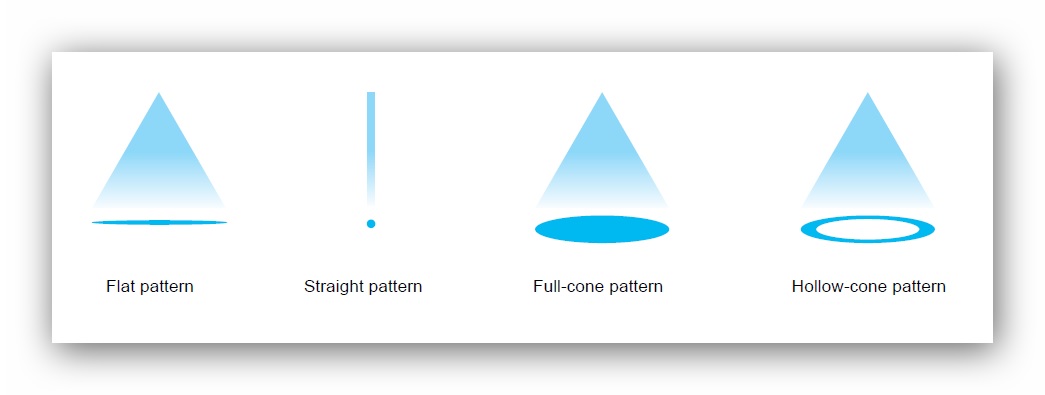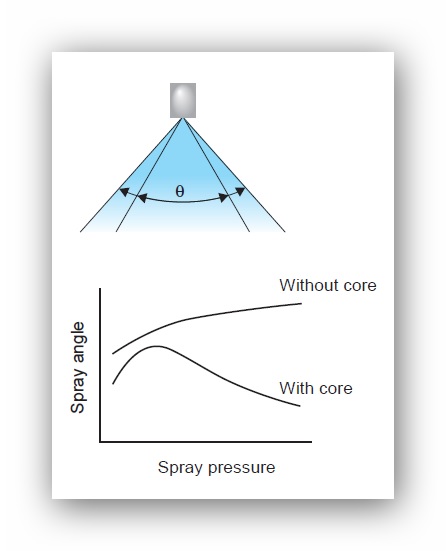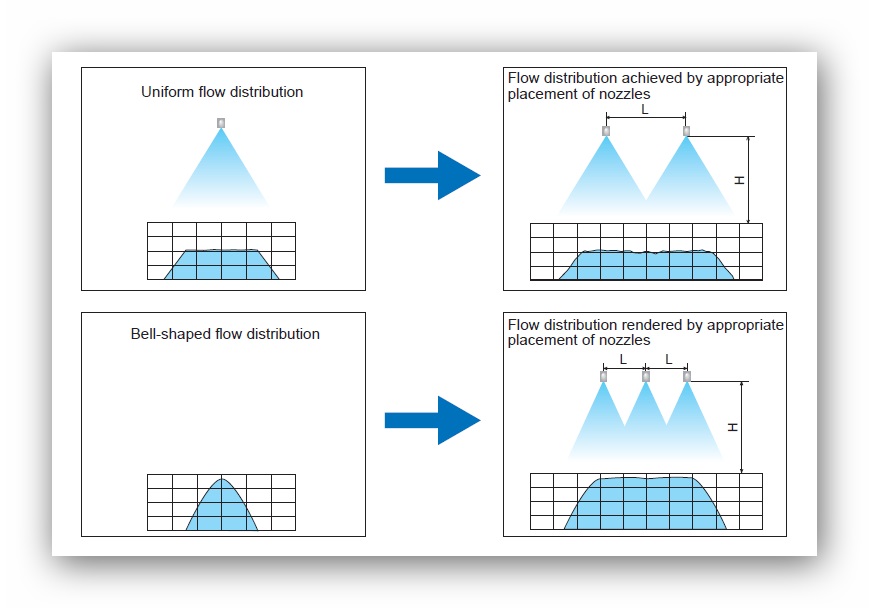Nozzles
General
Besides creating a specific, required spray pattern with a fluid or air, a nozzle will also give a specific flow at a given pressure. It is a measuring device.
In general we distinct two main types: hydraulic nozzles (single fluid) and air mist nozzles (two fluid).
For hydraulic nozzles the following spray patterns are availble:
Spray flow rate
The relation between pressure and flow rate is ruled by the following equation:
Q1= √(P1/P2) x Q2, in which
P1 =new pressure
P2 =known pressure
Q1 = new capacity at pressure P1
Q2 = known capacity at pressure P2
Spray angle
In general, the spray angle increases with increasing spray pressure. With some nozzles that have a core, such as a full cone nozzles, however, the spray angle increases until the spray pressure reaches a certain value and decreases thereafter with the increase in spray pressure.

Flow distribution
For increased widthwise uniformity in spraying for single-nozzle applications, it is desirable that the nozzle renders a uniform flow distribution with minimized shoulders. In some multiple-nozzle applications, however, it is more effective for uniform flow distribution over the whole spray region if each nozzle renders a bell-shaped distribution.



